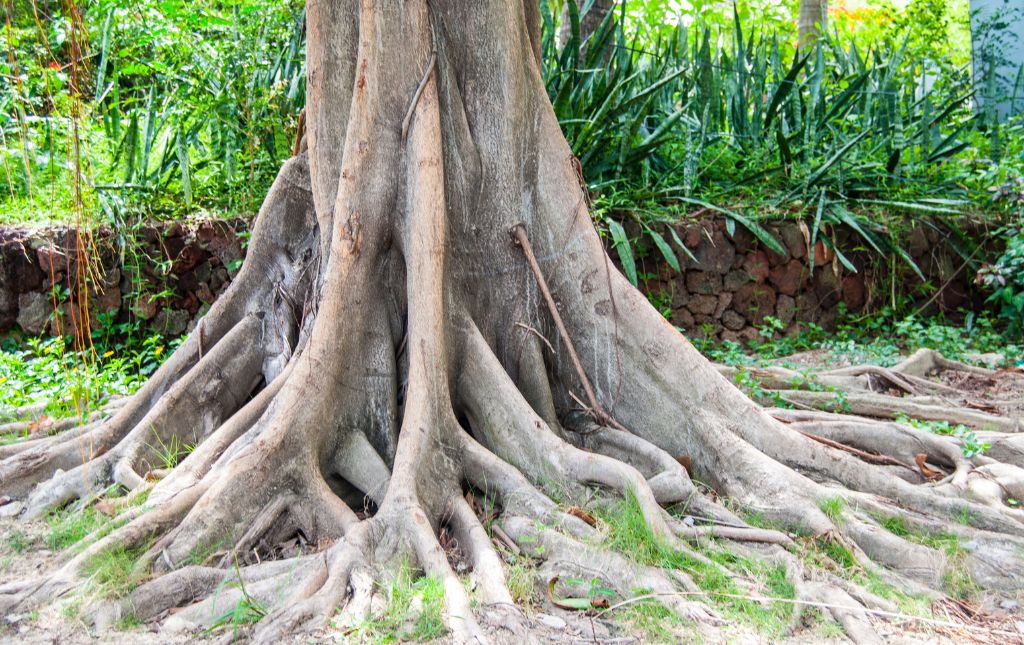In the world of commercial real estate, the stability of a building’s foundation is paramount. It’s the very bedrock upon which the edifice stands, providing support and ensuring the structural integrity of the entire enterprise. However, there’s a silent, often overlooked factor that can significantly affect the stability of commercial foundations – tree roots. In this comprehensive article, we delve deep into the intricate relationship between tree roots and how tree roots impact commercial foundations for commercial foundation stability.
The Silent Intruders: Tree Roots
Introduction to Tree Roots
Tree roots, nature’s underground network, serve a crucial purpose in the life of trees. They anchor the tree, absorb water and nutrients, and help it thrive. But when these roots come in contact with commercial building foundations, they can create a complex set of challenges. Understanding the science behind this interaction is the first step toward effective management.
How Tree Roots Interact with Foundations
Tree roots can be a formidable adversary for commercial structures. As they seek moisture and nutrients, they can grow toward the foundation, causing various problems. The most common ways tree roots interact with foundations are:
Physical Obstruction: As tree roots grow and expand, they can exert pressure on the foundation. This physical pressure can lead to cracks, shifts, and even structural damage over time.
Moisture Absorption: Tree roots are adept at absorbing moisture. When they encroach upon a foundation, they can deplete the soil’s moisture content, leading to soil shrinkage and destabilization.
Chemical Reactions: The roots of some tree species release chemicals that can affect the soil composition. This can alter the pH of the soil and weaken its load-bearing capacity.
Tree Species and Their Impact
Not all trees pose an equal threat to commercial foundation stability. Understanding which tree species are more likely to cause problems can help property owners and developers make informed decisions.
Large Deciduous Trees: Trees like oaks and maples have extensive root systems that can be particularly invasive. Their roots may seek moisture near foundations, leading to structural issues.
Conifers: Pine and spruce trees have shallow root systems, but their roots can spread wide, potentially interfering with foundations.
Willow Trees: These trees are known for their water-seeking roots. Planting them near a foundation is a recipe for moisture-related foundation problems.
Detecting Tree Root Damage
Common Signs of Tree Root Damage
Identifying tree root damage in its early stages is crucial for preventing severe foundation issues. Here are some common signs:
Foundation Cracks: Cracks in the foundation, especially diagonal or zigzag patterns, can indicate pressure from tree roots.
Uneven Floors: If you notice sloping or uneven floors in your building, it might be a result of shifting caused by tree roots.
Doors and Windows Misalignment: Doors and windows that no longer close properly may signal foundation movement.
Professional Inspection
If you suspect tree root damage, it’s essential to seek professional inspection and assessment. A structural engineer or arborist can provide an expert evaluation of the situation and recommend the necessary actions.
Mitigating Tree Root Impact
Preventative Measures
Preventing tree root damage is often more cost-effective than repairing it. Some proactive steps to take include:
Careful Tree Selection: When landscaping around commercial buildings, choose tree species with less invasive root systems.
Maintain a Safe Distance: Ensure trees are planted a safe distance from the foundation, considering the potential root spread.
Root Barriers: Installing root barriers can redirect tree roots away from the foundation, minimizing potential damage.
Remediation
In cases where tree root damage has already occurred, remediation efforts may be necessary. These can include:
Foundation Repair: Depending on the extent of damage, foundation repair may be required to restore structural stability.
Root Pruning: Trimming and pruning tree roots can be a short-term solution to alleviate pressure on the foundation.
Conclusion
The impact of tree roots on commercial foundation stability is a significant concern for property owners and developers. Understanding the science behind this interaction, recognizing the signs of damage, and implementing preventative measures are essential for maintaining a stable foundation. By taking informed steps to manage tree root impact, you can protect your valuable commercial investment.


